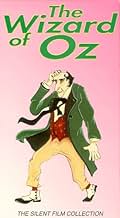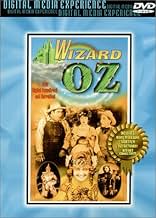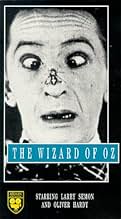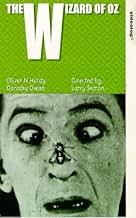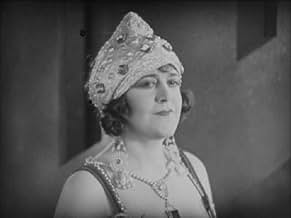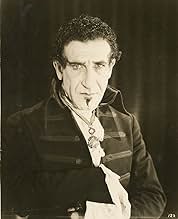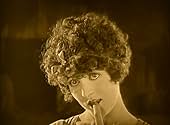AVALIAÇÃO DA IMDb
4,9/10
1,9 mil
SUA AVALIAÇÃO
Adicionar um enredo no seu idiomaDorothy, heir to the Oz throne, must take it back from the wicked Prime Minister Kruel with the help of three farmhands.Dorothy, heir to the Oz throne, must take it back from the wicked Prime Minister Kruel with the help of three farmhands.Dorothy, heir to the Oz throne, must take it back from the wicked Prime Minister Kruel with the help of three farmhands.
- Direção
- Roteiristas
- Artistas
- Prêmios
- 1 vitória no total
Oliver Hardy
- Woodsman
- (as Oliver N. Hardy)
- …
Curtis 'Snowball' McHenry
- Snowball
- (as G. Howe Black)
- …
Rosalind Byrne
- Herald Trumpeter
- (não creditado)
Chester Conklin
- Undetermined Role
- (não confirmado)
- (não creditado)
Wanda Hawley
- Undetermined Role
- (não confirmado)
- (não creditado)
Jean Johnston
- Little Girl in open & close
- (não creditado)
Avaliações em destaque
This is a strange, sometimes misogynistic, and sometimes racially stereotypical film, reflective of the time in which it was made. It fascinates on a historical level, and on a foundational comedic level. You can see the trademark Oliver Hardy gestures in development, and his interaction with Larry Semon foretells his film relationship with Stan Laurel. Some cute little animation effects (a bee enters one of Semon's ears only to exit from the other), reflective of Disney's contemporaneous mix of live action and animation.
The "digital" score and the use of a "narrator" (who horribly reads the subtitles...where did she learn to read???) is annoying.
All in all, cute, and worthy of 90 minutes.
The "digital" score and the use of a "narrator" (who horribly reads the subtitles...where did she learn to read???) is annoying.
All in all, cute, and worthy of 90 minutes.
After its 1902 tryout in Chicago, the stage play with songs by Paul Tietjens and Baum opened on Broadway in January 1903, running 293 performances before hitting the road, and returning to Broadway for four or five months in 1904. It then toured until 1911, when Baum permitted a host of amateur companies all over America to stage the play. In many areas, it became an annual event.
As Mordaunt Hall noted in his rave review in The New York Times, this version is not based on Baum's 1900 novel but on his 1902 stage musical. Many of the strange changes and eliminations in both the story and the characters were made by Baum himself. In fact, aside from the obvious enlargement of Larry Semon's role with the addition of a goodly number of comic routines, this movie is a pretty faithful transcription of the play.
True, some of the best jokes (the business with packing cases, for example), are worked to exhaustion. The main problem I find, however, is not that the stage play and movie have been converted into slapstick, but that the movie without the songs is often rather dull, despite the best efforts of Oliver Hardy and Charlie Murray.
As Mordaunt Hall noted in his rave review in The New York Times, this version is not based on Baum's 1900 novel but on his 1902 stage musical. Many of the strange changes and eliminations in both the story and the characters were made by Baum himself. In fact, aside from the obvious enlargement of Larry Semon's role with the addition of a goodly number of comic routines, this movie is a pretty faithful transcription of the play.
True, some of the best jokes (the business with packing cases, for example), are worked to exhaustion. The main problem I find, however, is not that the stage play and movie have been converted into slapstick, but that the movie without the songs is often rather dull, despite the best efforts of Oliver Hardy and Charlie Murray.
This is a pretty weird adaptation of the "Wizard of Oz", bearing only a passing resemblance either to the original book or to the beloved Judy Garland version. The story is much different, and the characters look and act much differently. Frankly, most of it isn't really very good, although for those who enjoy silent films there are some points of historical interest.
Instead of the more familiar story of young Dorothy's trip to Oz, the scenario here has a melodrama centering on a somewhat older Dorothy (Dorothy Dwan), combined with some slapstick involving the Oz characters. In itself, it's not necessarily a big problem to adapt the story (after all, the great 1939 version also made some significant changes from the book), but this one does not really fit together very well, and it certainly does not work as well as the more familiar story. It really looks as if Larry Semon just tried far too hard to put his own personal stamp on the story, instead of simply trying to make a good movie version of the Wizard. It's interesting to see Oliver Hardy as the Tin Woodman, but he doesn't really get a lot to do, and a number of the other characters are ill-conceived, and do not work out well at all. It's also plagued with a lot of excruciating puns in the title cards, plus other similar problems.
Some of the finest movies ever made came from this era, when the silents were at their peak, and it should have been possible to make a first-rate adaptation of the Oz story, but unfortunately this isn't it. With its overdone attempts at humor and melodrama, it looks more like the stereotyped images of silent movies that are held by so many ill-informed modern moviegoers. For silent movie fans, there are still a couple of points of interest that might make it worth watching in order to satisfy one's curiosity, but otherwise there's really no particular reason to see it.
Instead of the more familiar story of young Dorothy's trip to Oz, the scenario here has a melodrama centering on a somewhat older Dorothy (Dorothy Dwan), combined with some slapstick involving the Oz characters. In itself, it's not necessarily a big problem to adapt the story (after all, the great 1939 version also made some significant changes from the book), but this one does not really fit together very well, and it certainly does not work as well as the more familiar story. It really looks as if Larry Semon just tried far too hard to put his own personal stamp on the story, instead of simply trying to make a good movie version of the Wizard. It's interesting to see Oliver Hardy as the Tin Woodman, but he doesn't really get a lot to do, and a number of the other characters are ill-conceived, and do not work out well at all. It's also plagued with a lot of excruciating puns in the title cards, plus other similar problems.
Some of the finest movies ever made came from this era, when the silents were at their peak, and it should have been possible to make a first-rate adaptation of the Oz story, but unfortunately this isn't it. With its overdone attempts at humor and melodrama, it looks more like the stereotyped images of silent movies that are held by so many ill-informed modern moviegoers. For silent movie fans, there are still a couple of points of interest that might make it worth watching in order to satisfy one's curiosity, but otherwise there's really no particular reason to see it.
This movie was reportedly the one that sunk Larry Semon's career. Instead of the usual short films he was known for, Semon decided to do something "important" and made this (for the time) long film adaptation of THE WIZARD OF OZ,....or at least that's what the title indicates it should be. The story, it seems, bears little similarity to either the 1939 movie or the books. In fact, apart from a few names here and there, it is pretty much unrecognizable as the story about Dorothy and Oz. Instead, it was just an excuse to string along a lot of familiar and not especially funny gags--like I have seen in several other Larry Semon films, the big stunt is his swinging from tower to tower. A neat stunt the first time you see it, but not when it's old material and has nothing to do with the plot.
Overall, I consider this movie a wasted effort. I know that Semon COULD be funny--like he was in his short films. But here, it's just a confusing and dreary mess. Likewise, having Oliver Hardy in the film SHOULD have been an asset, but he was pretty much wasted as well. While not exactly a classic, the 1910 short silent version was much better and stuck closer to the original story and the 1939 version is a classic. This one is better off staying forgotten or seen by the morbidly curious as the project that may have ultimately destroyed Semon's career.
PS--In addition to being a terrible movie, there is a Black man named "Snowflake" that likes to eat watermelon! Ugghh!!!
Overall, I consider this movie a wasted effort. I know that Semon COULD be funny--like he was in his short films. But here, it's just a confusing and dreary mess. Likewise, having Oliver Hardy in the film SHOULD have been an asset, but he was pretty much wasted as well. While not exactly a classic, the 1910 short silent version was much better and stuck closer to the original story and the 1939 version is a classic. This one is better off staying forgotten or seen by the morbidly curious as the project that may have ultimately destroyed Semon's career.
PS--In addition to being a terrible movie, there is a Black man named "Snowflake" that likes to eat watermelon! Ugghh!!!
Even in it's day, I think that this movie would have been looked on as rather average. It just isn't a patch on the classic 1939 version. The scarecrow, the tin man and the cowardly lion are not characters, but rather disguises that three of the characters "put on". And there is no witch at all. [Margaret Hamilton, we miss you.] Although the plot is good, the way it's done would confuse younger children, and it somehow just doesn't hold up. It is interesting to see, only for its historic aspect.
Você sabia?
- CuriosidadesMany theatres that booked the film never received it because its production caused Chadwick Pictures to go bankrupt, and distribution ceased long before it was intended to.
- Erros de gravaçãoThe plane that brings Kruel's emissaries from Oz to Kansas is a triplane in midair but a biplane when it lands.
- Citações
Prime Minister Kruel: Do your stuff, Wizzy!
- Versões alternativas2005 DVD release on Warner Brothers (as a bonus feature with the 1939 version) alternates between sepia tone-colored images and blue-tinted images.
- ConexõesFeatured in Wiz on Down the Road (1978)
Principais escolhas
Faça login para avaliar e ver a lista de recomendações personalizadas
Detalhes
- Tempo de duração1 hora 35 minutos
- Mixagem de som
- Proporção
- 1.33 : 1
Contribua para esta página
Sugerir uma alteração ou adicionar conteúdo ausente

Principal brecha
By what name was O Feiticeiro de Oz (1925) officially released in India in English?
Responda

